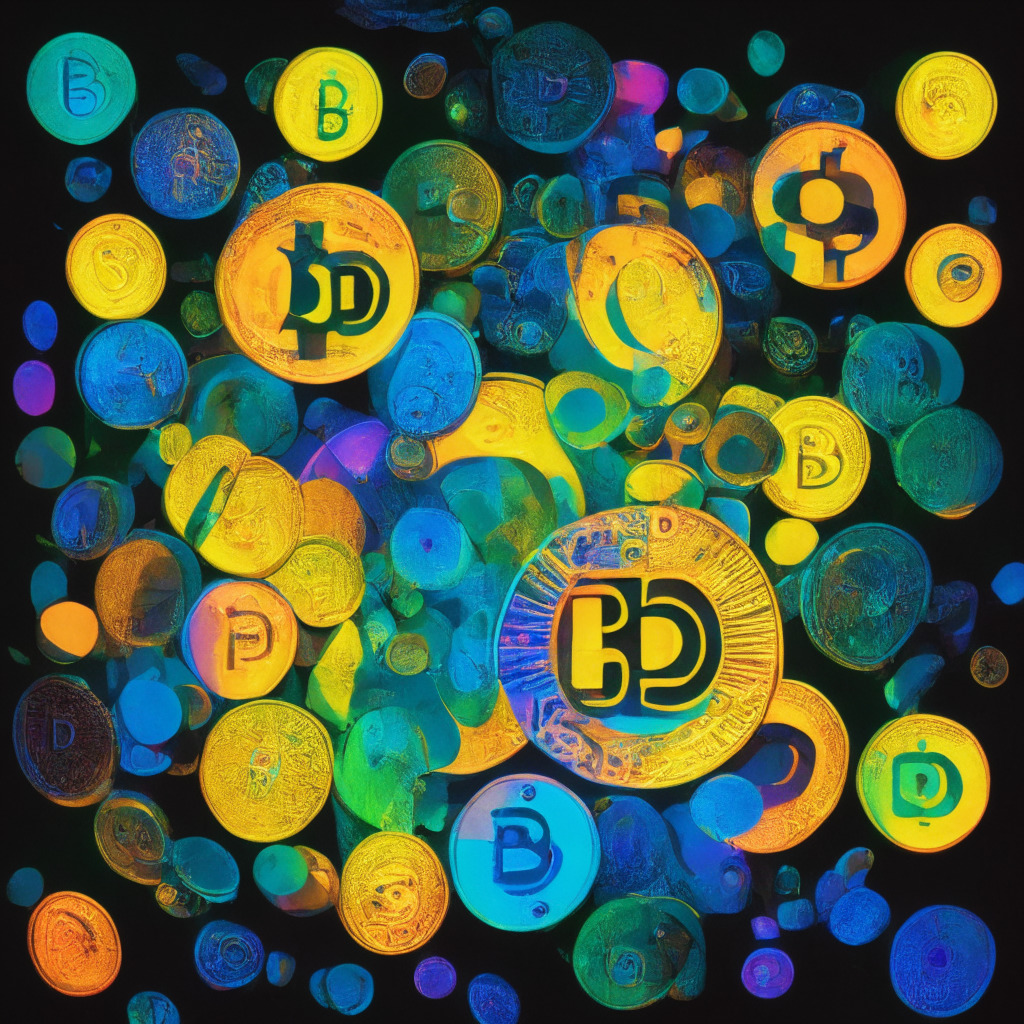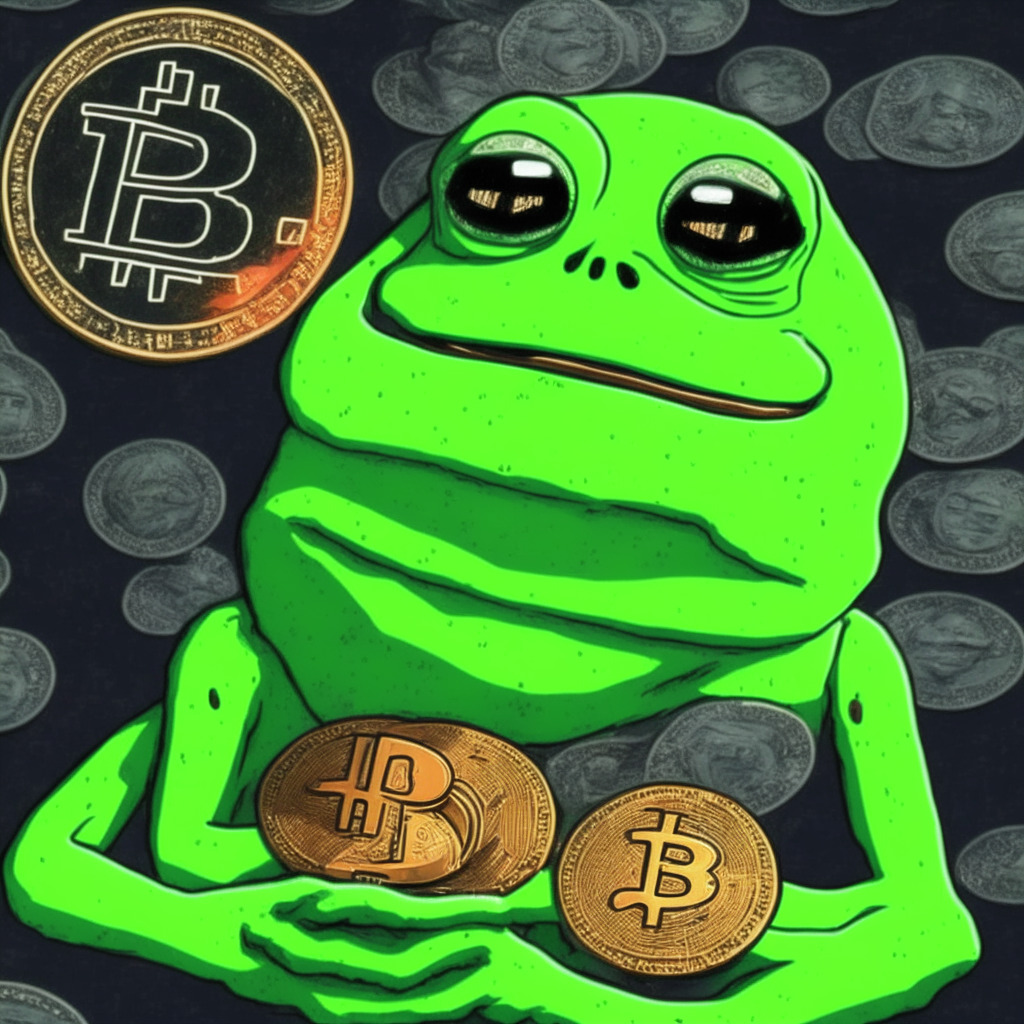Nikhil Rathi, CEO of Financial Conduct Authority (FCA), highlighted that despite the size of crypto firms, their commitment to strict regulatory scrutiny remains unchanged. With over 300 applications in two years, only 42 received approval due to adherence to anti-money laundering regulations.
Search Results for: Safe
Striding Ahead: How Stride’s Shift to Cosmos Security Impacts Tokenomics and Network Safety
Stride, the Cosmos-based liquid staking protocol, is planning a significant shift in security measures, transitioning from its current STRD token model to Cosmos’ interchain security system powered by ATOM tokens. While potentially diluting Stride’s network sovereignty, this change aims to enhance security resilience and balance sustainability.
National Australia Bank Blocks Certain Exchanges: A Necessary Safeguard or Hindrance to Crypto Progress
The National Australia Bank (NAB) announced blocks on certain “high-risk” crypto exchanges to prevent scams and protect customers. Critics argue this could limit the crypto industry’s growth. NAB claims about 50% of scam funds reported in Australia are linked to cryptocurrency, emphasizing the need for a balance between efficiency and security in financial transactions.
Navigating the Murky Waters of Metaverse Regulation: UK’s Online Safety Bill & Beyond
The UK House of Lords deliberates if metaverse should be governed by online safety regulations established in the UK’s Online Safety Bill, emphasizing the potential vulnerability of children and adults in these digital spaces. Variations exist in international regulations, raising standardization concerns and questioning the adequacy of traditional legal systems to address rapidly evolving digital spaces.
Securing the Future: How a ‘Hard Fork’ Could Safeguard BNB Chain
“BNB Chain is enhancing security through the upcoming ‘ZhangHeng’ upgrade. This update, or ‘hard fork’ on 19th July, will not create any new BNB tokens but requires over two-thirds of validators to upgrade their nodes. It aims to catch any potential issues by closely monitoring user balances and even “panicking” the blockchain when a reconciliation error occurs, pausing new blocks generation, to protect against known ‘bridge attacks’ and other exploits.”
Playing Safe with Crypto: Puerto Rico’s Tax Rules and the Impending IRS Clampdown
Federal prosecutors and IRS agents are reportedly targeting crypto traders and fund managers exploiting lax tax rules in Puerto Rico. This highlights the tensions when traditional tax systems collide with blockchain and crypto, with critics worried about the possibility of enabling tax evasion, wealth redistribution manipulation, and strain on finite resources.
Safeguarding Crypto Assets: The Colorful Future of Bitcoin Security
Bitcoin offers a groundbreaking tool known as “BIP39Colors” developed by Entero Positivo. This ingenious approach alters conventional alphanumeric private keys into colors, providing a less conspicuous and more secure way to safeguard crypto assets from potential theft or governmental interference.
Eliminating Virtual Hazards: AI-Enhanced NFTs Introduce Parental Controls for Safer Interactions
OnChain Studios and NFT company Cryptoys are merging artificial intelligence and non-fungible tokens to form a child-friendly AI chatbot – ChatGuardian. This digital development is designed to enhance children’s interaction with their NFT characters while ensuring a safe environment.
Navigating the Regulatory Terrain for Stablecoins: Promising Future vs. Consumer Safety Debate
“The European Banking Authority is urging an early adaptation of guidelines for managing stablecoins, ahead of mandatory regulations due next year. This includes understanding and implementing the EU-approved MiCAR framework’s measures for good governance and consumer protection. These preemptive actions are designed to reduce potential risks and facilitate effective consumer protection in the rapidly evolving stablecoin market.”
Global Digital Currency Race: Stablecoins Threat or CBDCs Safety?
“The race for global digital currency dominance has stablecoins and Central Bank Digital Currencies (CBDCs) in the lead. However, Rabi Sankar, Deputy Governor of the Reserve Bank of India, warns that stablecoins could pose significant policy sovereignty risks for certain nations.”
Unmasking the Gutsy NFT Heists: How Safe is Your Digital Art Collection Really?
The crypto world recently witnessed a major hack, targeting the Ethereum-based NFT collection, Gutter Cat Gang, resulting in a loss range of $750K-$900K. This sophisticated attack stole 87 NFTs from 16 individuals, leveraging the Gutter Cat Gang’s Twitter for a fake public airdrop. The incident highlights the critical need for extensive security measures to protect crypto assets and platforms.
Evolving with SafeMoon 3.0: Correcting Past Errors or Stirring Up New Risks?
“SafeMoon 3.0’s (SFM3.0) launch has created a buzz, with its price rising over 500% instantly. Addressing previous version’s mistakes, SFM3.0 offers enhanced security and user experience, reintroduces the burn and reward mechanism, infusing more trust in the community and deterring market manipulation.”
Surging BOBO Coin: Impressive Gains or Inflated Bubble? Evaluating Meme-Token Space Safety
“Bobo Coin (BOBO) experienced a remarkable 200% surge within 24 hours, raising its total gain since initial offering to 3,000%. Despite its growth, concerns arise due to its negligible fundamentals and potential for a prompt correction, emphasizing the volatility and unpredictability of meme tokens.”
Unveiling Base: Coinbase’s Disruptive Layer 2 Blockchain Safeguards and Its Mainnet Launch Challenges
“Base, Coinbase’s layer 2 blockchain, successfully passed a series of security audits ahead of its mainnet launch. Created with Optimism, Base aims to attract one million new crypto users. Over 100 experts examined its code, finding no significant vulnerabilities, reflecting Coinbase’s dedication to security.”
Striking the Balance: South Korea’s New Crypto Legislation, Investor Safety and Innovation Stifling Consequences
South Korea recently passed the ‘Virtual Asset User Protection’ legislation, a collection of 19 crypto-related bills aimed at safeguarding investors and addressing unfair trading in the cryptocurrency arena. This law also holds Virtual Asset Service Providers (VASPs) accountable for users’ deposits and insurance provisions, aimed at protecting against risks including hacks and computer failures.
Blockchain Australia Takes On Crypto Scams: Balancing Freedom and Regulation for Safe Use
Blockchain Australia’s new CEO, Simon Callaghan, is rallying Australia’s banks, government, and the local crypto community to combat rising cryptocurrency scams. The Australian Government is significantly investing in reducing scams, with National Anti-Scam Centre playing a crucial role. Blockchain Australia is now focusing on scam prevention by examining data from cryptocurrency exchanges to share fraud prevention best practices.
Riding the Crypto Rollercoaster: Surviving Dips with Toncoin and Golteum’s Promising Safe Havens
Golteum (GLTM), a platform nested within the Golteum ecosystem, mitigates risks inherent in fluctuating crypto assets through seamless crypto trading and simplified ownership of precious metals. Backed by Fireblocks Web3 engine, GLTM promises solid technology and easy execution in transactions like tokenization of precious metals.
Crypto World Update: Scandals, Legal Battles, Innovations, and Safety Concerns
This week in crypto, deception and legal battles intertwined with ambitious innovations. Key highlights include Crypto.com’s internal teams trading tokens for profit, Valkyrie Funds filing a Bitcoin ETF application, and global governments exploring digital currency regulations. Safety remains crucial as crypto crime and hacks persist.
Rising Blockchain Wallet Scams: Techniques to Identify and Safeguard Your Assets
The number of scams involving blockchain wallets has increased significantly, with 7,905 fraudulent wallets created in May alone. Scammers are using techniques like ice phishing, address poisoning, and exploiting NFT infrastructure to steal funds. To avoid falling victim, users should verify wallet addresses and utilize security features provided by wallet providers.
Argentine Commission Cyber-Attack: Defying Hackers vs Safeguarding Sensitive Data
The Argentine Securities and Exchange Commission (CNV) faced a cyberattack by MedusaBlog, demanding a $0.5 million Bitcoin ransom. CNV’s refusal led to 1.5 terabytes of sensitive data leaked on the dark web. This incident highlights the complexities of managing sensitive information and raises questions about ransom payments and cybersecurity.
Blockchain Revolution: Disruptive Potential vs Regulatory and Safety Concerns
The blockchain revolution has garnered attention for its potential for disruption and advancement. This technology enables greater transparency and decentralization, transforming industries such as decentralized finance (DeFi). However, concerns about safety, criticisms, and regulatory hurdles call for adaptability, diligence, and collaboration within the community to unlock blockchain’s full potential.
AI Safety Legislation: Balancing Innovation and Public Trust in the Era of Artificial Intelligence
US Senate Majority Leader Chuck Schumer plans to call for comprehensive legislation regarding AI safety measures, emphasizing bipartisan action from Congress. Addressing safe innovation, privacy, biases, and misinformation, Schumer aims to ensure responsible and secure AI development while maintaining public trust in the technology.
National AI Commission Act: Balancing Innovation and Consumer Safety in AI Development
The National AI Commission Act, introduced by U.S. lawmakers, aims to establish a regulatory framework for AI technology by bringing together experts, government officials, industry representatives, and labor stakeholders to provide effective AI regulation, addressing concerns and potential risks associated with AI development and use.
Malicious Crypto Wallet Apps: Apple’s Struggle and User Vigilance in Staying Safe
Apple’s App Store removed a malicious Trezor wallet app after concerns were raised about its potential to steal cryptocurrency. However, other harmful copycat apps still exist, questioning Apple’s vetting process and urging users to remain cautious and rely on official sources for downloading crypto wallet apps.
Harnessing AI’s Potential: The Debate Over Stricter Regulations and Consumer Safety
Consumer protection groups in the EU are urging regulators to investigate AI models behind popular chatbots like OpenAI’s ChatGPT due to potential risks and vulnerabilities. As AI regulations tighten globally, balancing AI benefits with consumer rights and safety is crucial for creating a comprehensive regulatory framework and fostering public trust.
Navigating Murky Crypto Regulation: Analyzing SEC, Ripple, and the Safe Harbor Debate
The ongoing SEC vs Ripple case highlights the need for regulatory clarity in the cryptocurrency space. The “Safe Harbor Proposal” and Ethereum’s “safe harbor” designation have stirred debates about fair regulations, fostering innovation, and protecting investors from potential hazards.
Elon Musk Labels AI Chatbot a Scam: BOB Token Value Dips & the Debate on Crypto Safety
An AI chatbot linked to the Pepe the Frog-inspired BOB Token has been removed from Twitter after Elon Musk called it a “scam crypto account.” Musk’s earlier interaction with the chatbot caused a 4,744% surge in token value, which later dipped by over 40% following the account’s suspension. This move aligns with Musk’s commitment to eliminating spam and maintaining a cleaner Twitter ecosystem.
Mastering ChatGPT Prompts: Importance, Techniques, and Ensuring AI Safety
In this article, the importance of writing effective ChatGPT prompts is discussed to optimize AI performance. Users must provide clear instructions, specify context, and manage potential biases. The article also emphasizes prioritizing safety, security, and accountability while interacting with AI-powered tools.
Crypto Mining as Money Laundering Tool: Risks and Solutions for a Safer Ecosystem
The Lazarus Group, a North Korean hacking group, has been found using stolen cryptocurrencies to mine “clean” coins and launder them through hashing rental and cloud mining services. Blockchain forensic firm Chainalysis reports a rise in ransomware wallets sending funds to mining pools, possibly for money laundering purposes. Ensuring mining pools and hashing services implement rigorous wallet screening, including KYC protocols, could help prevent exploitation of mining for money laundering.
French Digital Asset Mediation Surge: Balancing Progress, Disputes, and Market Safety
According to the French stock market regulator AMF’s annual report, digital asset-related mediations and registered digital asset service providers (DASPs) significantly increased in 2022. This growth could indicate increased industry adoption but also raises concerns about potential disputes and the need for stronger oversight.
Apple’s Clash with Crypto Wallets: Balancing Innovation, Regulation, and Safety
Apple recently rejected non-custodial Lightning-enabled bitcoin wallet, Zeus, after a disagreement concerning decentralized social media platform Damus. Zeus allegedly violated Apple’s guidelines requiring appropriate licenses for cryptocurrency transmission. The compromise between Zeus and Apple is essential for the growth and adoption of cryptocurrencies.
FCA Approvals for Bitstamp, Interactive Brokers: A Leap Towards Safer Crypto in the UK?
The UK’s Financial Conduct Authority (FCA) recently approved Bitstamp and Interactive Brokers to join its registry of crypto asset service providers, marking the first additions in six months. These approvals emphasize the FCA’s focus on enforcing anti-money laundering and counter-terrorist financing legislation, ensuring a safer environment for cryptocurrency consumers and investors.































